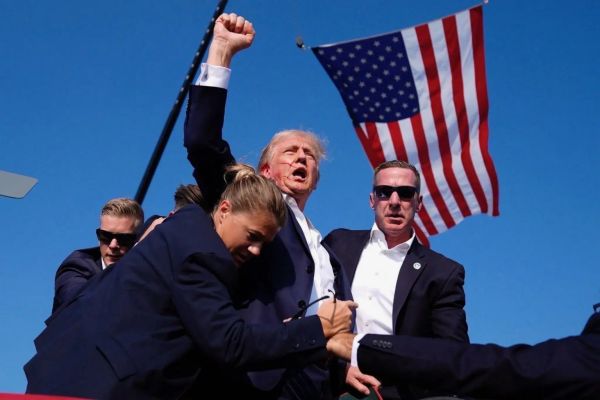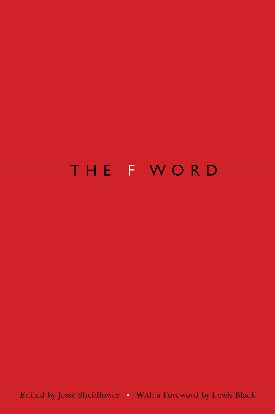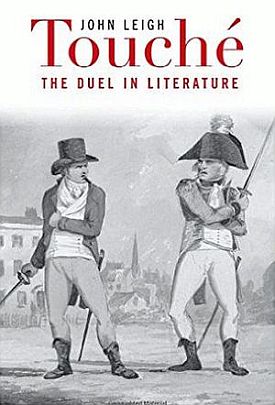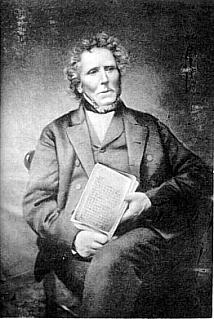Ear’s-breadth escape
“Iran threat prompted more security at Trump rally,” headlined the Associated Press, referring to the rally in Butler Pennsylvania, at which, three days previously, there had been a very nearly successful attempt on the life of Donald Trump. So. A would-be assassin’s being given time to take eight shots with a high-powered rifle at the former president before being shot himself represents more security than usual, does it? That Mr Trump survived the attempt with no more than a nick of his right ear by one of the assassin’s bullets must make his escape seem even more miraculous than it otherwise would have been.
It was therefore natural that he should attribute his survival to supernatural providence and so reinforce a sense of himself as a man of destiny. In the liberal media, where even so venerable a journal of opinion as The New Republic has now been reduced to drawing Hitler mustaches on Mr Trump, such a claim could only be interpreted as fascist propaganda. N.S. Lyons, in an amusing column he titled, echoing Hegel on Napoleon, “The World-Spirit on a Golf Cart” thought the more relevant comparison was not with Hitler but with the French Empereur.
Donald Trump has always been something of a bafflingly lucky man, as even his enemies are prone to admit. But witnessing him, in response to whatever whisper of Providence, tilt his head at precisely the right moment and degree to cheat death, I and apparently many others can’t help but feel like he may be more than lucky — that he now seems as much myth as man. And when he emerged, shaking off his bodyguards and streaked with blood, to stand and pump his fist in defiance beneath the American flag (as captured by a photographer who just happened to be there at the perfect place and time to reveal an era-defining symbolic image), this was rightly described by awed watchers in the stands and across the nation as “epic.”
Looked at from the angle of The New York Times, however, the same series of events comes out like this:
For Donald J. Trump’s most ardent supporters, the assassination attempt on Saturday was the climax and confirmation of a story that Mr. Trump has been telling for years. It is the story of a fearless leader surrounded by shadowy forces and intrigue, of grand conspiracies to thwart the will of the people who elected him. A narrative in which Mr. Trump, even before a gunman tried to take his life, was already a martyr.
But this heard-it-all-before approach was only one, and perhaps the least offensive of the ways in which the overwhelmingly Trump-hostile media tried to minimize the “epic” or mythic dimension of the attempt upon the former president’s life — and at the same time to excuse themselves for almost completely avoiding any slightest expression of human sympathy for a man who had so very nearly suffered a horrible, and horribly public, murder.
For not a few of the most partisan Democrats — and some Republicans — aware that they might be suspected of having wished for such a thing to happen, the assassination attempt represented a political setback which had to be reversed by whatever bit of tendentious sophistry lay at hand. In Politico, for example, Ruth Ben-Ghiat, author of Strongmen: Mussolini to the Present, wrote comparing the former president not to Hitler but to Il Duce, the original fascist, who also survived an assassination attempt in 1926 in which the bullet grazed his nose — and also subsequently wore a bandage over the injured appendage in public, presumably to remind people that he led a charmed life. “The history of Mussolini’s consolidation of power and the attacks that punctuated that process carry lessons for our understanding of the mentality and methods of Donald Trump after the attempt on his life at a rally last month,” she wrote.
Even his courage in rising above the scrum of his Secret Service bodyguards to pump his fist and urge his supporters to “fight” was just a bit of theatre, wrote Professor Ben-Ghiat. “With that gesture, Trump tended to his personality cult, reassuring millions of his devoted followers that he had survived and was unbeaten — just as Mussolini did with his photo almost 100 years before.” In other words, Mr Trump’s fortuitous evasion of the bullet that so very nearly killed him and spirited defiance of fatality constitutes evidence that he is, or expects to be, a Mussolini-like strongman, if not a dictator in the making.
Others, like Joy Reid and Keith Olbermann suggested that the attempt on Mr Trump’s life had been somehow staged — perhaps with the help of a hired marksman of such exemplary skill that he must himself have been a mythic figure on the scale that Mr Trump was striving to embody.
Still others, while admitting that the attempt was genuine, hinted that the near loss of his life (at least) was no more than the Bad Orange Man had deserved for questioning the results of the 2020 election and leading a supposed “insurrection” in order to stay in power. He had, it is said, thus flouted the law, so he could have had nothing to complain of — even if, presumably, the equally lawless Mr Crooks had succeeded in killing him.
The media’s most common method of minimizing the import of the attempted murder, however, and so excusing themselves from expressing any sympathy, let alone admiration, for a man they hated so much, was by a general denunciation of something called “political violence” — or anything coming from either political side (no specifics, please!) that some unhappy youthful “loner” might regard as an incitement to same. This was also President Biden’s approach to the matter, in an Oval Office address the next day in which he called on the nation to “lower the temperature in our politics”— as if hitherto high rhetorical temperatures were nothing to do with him. “There is no place in America for this kind of violence,” he said. “For any violence, ever. Period. No exceptions. We can’t allow this violence to be normalized.”
The President’s increasingly obvious cognitive decline, which the Trump assassination attempt had just, finally, pushed off the front pages, must have caused him to forget not only his constant harping on the “threat to our democracy” supposedly posed by Mr Trump — an idea that he then proceeded to re-iterate in an interview with Lester Holt of NBC — but also the exceptions he and other Democrats had made for the violence in the Black Lives Matter protests of 2020.
Similarly, The Washington Post editorialized that “We have all been touched by toxic politics — regardless of our beliefs,” without any mention of the paper’s own frequent descent into the very same toxic politics, most notably in a 7000 word piece by Robert Kagan last year which concluded that what he regarded as the incipient Trump dictatorship was a threat analogous to an asteroid on a collision course with North America. This was a potential catastrophe so great, wrote Mr Kagan, that we should “be taking every conceivable measure to try to stop it.”
Vera Bergengruen of Time purported to explain what she calls “America’s Political Violence Crisis” by noting that “The gunshots fired by a skinny 20-year-old perched on a roof overlooking the Butler Farm Show grounds were a reminder of America’s political reality in 2024, which has been warped by increasingly violent rhetoric, threats, and attacks.” In other words, “You’re not so special, Mr Trump! Climb down off your high golf cart. We’re all victims!” Could any of that “increasingly violent rhetoric” have been found in Time itself? We are not told. Better to leave the past behind as we, the media, move on to the moral high ground, far above the political fray of which we pretend to be only the observers and impartial judges.
Some there were who were prepared to name names. “Who Normalized Political Violence in America?” asked Lee Smith of Tablet, noting the “chorus of establishment stalwarts, like George Stephanopoulos, David Rothkopf, and others who argued that Trump and his aspiring assassin were cut from the same cloth.”
That’s Hamas logic: The violence of our victims drove us to burn them alive. Thus, the left is laying down the predicate for future violence against Trump and the half of the country that supports him: It’s OK to target them because being “at both ends of the bullet’s trajectory,” they brought it upon themselves. No, the violence came from the left. The question is, who from the left is responsible for cultivating it?
I’m not entirely persuaded by Mr Smith’s own answer to this question of who “normalized” our political violence — which is one Barack H. Obama, another former president, through his pro-Iranian (and therefore pro-Hamas) foreign policy in the Middle East. But there’s no denying that, at least since last October 7th, the preponderance of political violence, both rhetorical and actual, in this country has come from the left and not the right.
Few indeed, however, were those decriers of political violence who were prepared to acknowledge that fact. Moreover, responding to an assassination attempt by denouncing an abstract concept like “political violence” not only excuses political hatred from moderation by specific sympathy with violence’s victims, but in our political context it also leads back around to another abstract concept called “domestic extremism” or “domestic terrorism” which the Biden administration has from the start treated as the major threat to our national security. Here, for instance, is Ms Bergengruen of Time:
In their most recent threat assessment, DHS officials flagged domestic extremists motivated by partisan grievances or antigovernment conspiracies as a top national security risk. . . In contrast with much of the past two decades, when U.S. officials focused on larger terrorist groups, the highest threat now comes from self-radicalized Americans and “lone offenders,” DHS concluded. Taking office after the Jan. 6 attack, the Biden Administration vowed to fight the “rising tide” of domestic extremism.
As if it were a would-be Trump-killer, like young Mr Crooks, whom the Biden DHS had in mind by making such a threat assessment, or who caused it to shift “resources from foreign terrorism to understanding homegrown radicalization” and produce “a national strategy to address the problem.” As part of this strategy, according to Ms Bergengruen, “the FBI distributed 40,000 booklets to partners on how to spot the signs of violent extremism.”
Nobody but the media ever required any help from the FBI (not that they were ever likely to get it) to spot the signs of the previous sort of extremism. Old-style “foreign terrorism” always had the advantage over its successor of announcing itself in pretty obvious terms. But this new domestic extremism, as understood by the Biden administration’s Department of Homeland Security, was supposed to be coming — eventually, once the FBI managed to find it — exclusively from the right. Mr Trump himself has long been identified by some in the leftist media as what they call a “stochastic” terrorist — which is just like a regular terrorist except that he commits no actual acts of terrorism but only dog-whistles his terroristic intentions to his supporters.
By implication, then, the identification of “political violence” as the culprit in Mr Trump’s shooting constituted rather more than a hint in the direction of the same idea — that is, of his share (at least) in the guilt for his own near murder. At any rate, Mr Crooks can’t have counted as an example of the putative threat of domestic violence to the many in the media who seemed to puzzle over his “motive” in trying to kill the former president. Perhaps, like the lunatic who shot Rep. Gaby Giffords and others 14 years ago, he wasn’t politically motivated at all, though the media were quick to diagnose such a motive at the time, when the intended victim was one of their own.
Meanwhile, no one was asking what has been the motive of the pro-Hamas demonstrators — also cited by Liel Leibovitz as the new locus of political violence in America. Their hatred for Israel and its supporters and sympathizers is now socially acceptable and out in the open throughout most of the world, and scarcely more obvious than the Trump-hatred behind the media and Democrat attempts to excuse his attempted murder as no more than one more example of the “political violence” they see as a right-wing problem.
“We ignore at our peril the rage that animates Trump voters and threatens Biden’s chances this fall,” wrote Marilynne Robinson for the New York Review of Books before the assassination attempt and President Biden’s slow-motion abdication which was probably precipitated by it as much as by his abysmal performance in June’s debate with Mr Trump. I know a few Trump voters and also a few Biden voters, and it seems to me obvious that if any of them can be described as animated by “rage” they are the Biden voters, hands down. An article like this one seems itself to be patently animated by rage and its author to be projecting her own rage onto those of whom she writes — just as there are no haters like those who claim to afford “no room for hate.” (See “Pieces of Hate” in The New Criterion of May, 2024).
I may, of course, be quite wrong about this, and it would be foolish to deny that there is plenty of hatred coming in the other direction from the much hated Trumpists. But there is, I think, a certain asymmetry in all this bad feeling. The hatred on the right is better described as contempt — the contempt owing to what the Trumpists see, not without reason, as the injustice and deceit of the Trump haters. Contempt is hatred of a kind, perhaps, but hatred without the fear which is always a part of pure hatred. Maybe that’s why Mr Trump’s apparent fearlessness in the face of mortal peril was so offensive to those who hated him. He could claim a sort of moral superiority to them by showing none of the fear that they feel towards him.
And yet that hatred is weirdly like love in one way at least. For it was the rabid, unforgiving Trump haters, who first made the former (and future?) president into a mythic figure. To be sure, he was to them a mythic figure of supernatural evil, comparable to Hitler himself with the added destructive power of an asteroid, hurtling towards earth. Who — or what — else could have faked — as Joy Reid or Keith Olbermann thought Donald Trump did — such a near miss assassination as took place in Butler, Pennsylvania on July 13th? In elevating him to such superhuman status they put him where those who loved him — and even some of those who hated him less than they — were happy to find him and accept his mythic status as a man of destiny, now more than ever capable of Making America Great Again.
Discover more from James Bowman
Subscribe to get the latest posts to your email.






